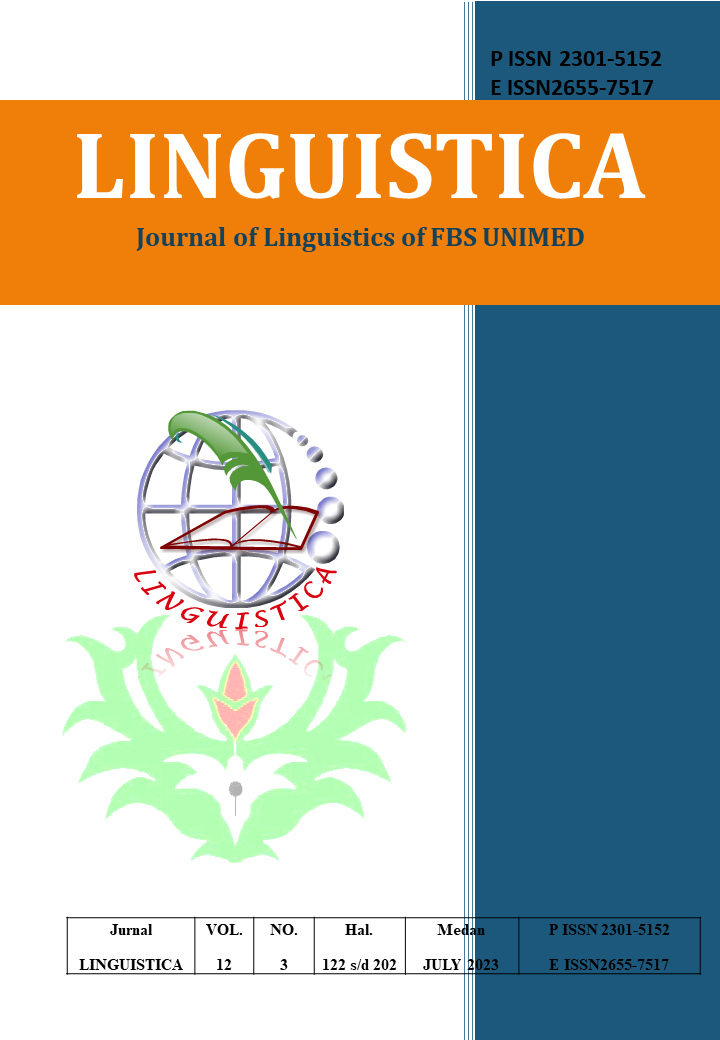APOLOGY STRATEGY IN DISNEY AND PIXAR™S LUCA MOVIE: A PRAGMATIC APPROACH
DOI:
https://doi.org/10.24114/jalu.v12i3.49504Abstract
This paper aims to analyse the various apology strategies used by the characters in the Luca movie script and describe their use through a pragmatic approach by referring to the theory of Klimczak and Pawlak (2014) and Fraser's theory (1981) to explain the factors that influenced the use of apology strategies by characters in Luca's film script. This study uses a descriptive qualitative research method with data obtained from the film script Luca. The results of this study indicate that there are 23 utterances featuring apologies made by 6 characters in Luca's story. The findings are grouped into a taxonomy of apology strategies, there are 9 types of apology strategies used by the characters in Luca's story. The 9 types of strategy include Illocutionary Force Indicating Device (an expression of regret) of 5 utterances, Illocutionary Force Indicating Device (a request for the forgiveness) of 1 utterance, Phatic Communication of 2 utterances, Acknowledgement of Responsibility (explicit self-blame) of 2 utterances, Internal Intensifiers (intensifying adverbials) with 2 utterances, Acknowledgement of Responsibility with 4 utterances of lack of intent, Acknowledgement of Responsibility (expression of embarrassment) with 4 utterances, Explanation or account of the situation with 2 utterances, and Acknowledgement of Responsibility (refusal to acknowledge guilt) with 1 utterance, which every utterance and strategy were influenced by 1-2 factors.Downloads
Published
2023-08-02
How to Cite
SILVINA, S., & HARTATI, R. (2023). APOLOGY STRATEGY IN DISNEY AND PIXAR™S LUCA MOVIE: A PRAGMATIC APPROACH. LINGUISTICA, 12(3), 168–183. https://doi.org/10.24114/jalu.v12i3.49504
Issue
Section
Articles
License
Copyright (c) 2023 SILVINA SILVINA, RITA HARTATI

This work is licensed under a Creative Commons Attribution-ShareAlike 4.0 International License.
Authors who publish with this journal agree to the following terms:
- Authors retain copyright and grant the journal the right of first publication with the work simultaneously licensed under a Creative Commons Attribution License that allows others to share the work with an acknowledgment of the work's authorship and initial publication in this journal.
- Authors are able to enter into separate, additional contractual arrangements for the non-exclusive distribution of the journal's published version of the work (e.g., post it to an institutional repository or publish it in a book), with an acknowledgment of its initial publication in this journal.
- Authors are permitted and encouraged to post their work online (e.g., in institutional repositories or on their website) prior to and during the submission process, as it can lead to productive exchanges, as well as earlier and greater citation of published work (See The Effect of Open Access).
- This work is licensed under a Creative Commons Attribution-ShareAlike 4.0 International License.









